Level Up! Essential Cloud Security Concepts Every IT Auditor Needs to Know in 2024
As cloud adoption skyrockets, understanding cloud security is critical for IT auditors. This guide explores essential concepts, from shared responsibility to incident response, to empower you to assess cloud environments effectively.
The cloud has revolutionized how businesses operate, offering unparalleled scalability and agility. But with these benefits come unique security challenges. IT auditors play a vital role in safeguarding critical data and infrastructure within this ever-changing environment. To excel in this role, mastering essential cloud security concepts is paramount.

As a trusted advisor, your role as an IT auditor is paramount in safeguarding sensitive data and ensuring the security of critical cloud infrastructure. To excel in this vital role, mastering essential cloud security concepts and best practices is crucial. This comprehensive guide serves as your roadmap to success, offering you the necessary knowledge and insights to confidently navigate the ever-changing cloud security landscape.
1. Demystifying Cloud Computing
 Before delving into cloud security specifics, a solid grasp of cloud computing fundamentals is crucial. Explore the three service models (IaaS, PaaS, SaaS) and deployment models (public, private, hybrid) to understand the shared responsibility between cloud providers and customers.
Before delving into cloud security specifics, a solid grasp of cloud computing fundamentals is crucial. Explore the three service models (IaaS, PaaS, SaaS) and deployment models (public, private, hybrid) to understand the shared responsibility between cloud providers and customers.
By comprehending these diverse service and deployment models, IT auditors can effectively assess the shared responsibility model, which outlines the security responsibilities shared between cloud providers and customers. This understanding forms the crucial foundation for implementing and evaluating effective cloud security measures.
2. The Shared Responsibility Model (A Balancing Act)
 Cloud security hinges on the shared responsibility model. While providers handle the underlying infrastructure and platform security, customers are responsible for securing their data and configurations within the cloud. IT auditors must assess the effectiveness of both sides’ controls.
Cloud security hinges on the shared responsibility model. While providers handle the underlying infrastructure and platform security, customers are responsible for securing their data and configurations within the cloud. IT auditors must assess the effectiveness of both sides’ controls.
At the core of this model lies the understanding that cloud providers are accountable for the security of the underlying infrastructure and platform. This encompasses securing the physical data centers, network infrastructure, operating systems, and underlying virtualization technologies. They are also responsible for ensuring the security of the cloud services themselves, including patching vulnerabilities and addressing known security issues.
3. Protecting Your Crown Jewels (Data Security in the Cloud)
 Cloud environments often hold sensitive information, making data protection paramount. IT auditors must understand encryption mechanisms, secure data transfer protocols, data residency regulations, and compliance with data protection laws like GDPR and HIPAA.
Cloud environments often hold sensitive information, making data protection paramount. IT auditors must understand encryption mechanisms, secure data transfer protocols, data residency regulations, and compliance with data protection laws like GDPR and HIPAA.
Data encryption is the cornerstone of data protection in the cloud. IT auditors must be familiar with various encryption algorithms and mechanisms, including symmetric and asymmetric encryption, and understand their applications for data at rest and in transit. Evaluating the implementation of encryption by both cloud providers and customers is crucial to ensure the confidentiality of sensitive data.
4. Identity and Access Management (The Gatekeepers of the Cloud)
 IAM is the bedrock of cloud security, governing user access and permissions. IT auditors should be familiar with multi-factor authentication, role-based access control (RBAC), and privileged access management (PAM) to assess the effectiveness of access controls and prevent unauthorized access.
IAM is the bedrock of cloud security, governing user access and permissions. IT auditors should be familiar with multi-factor authentication, role-based access control (RBAC), and privileged access management (PAM) to assess the effectiveness of access controls and prevent unauthorized access.
Multi-factor authentication (MFA) plays a critical role in fortifying IAM, adding an extra layer of protection beyond traditional username and password combinations. By requiring users to present additional verification factors, such as a one-time code or biometric authentication, MFA significantly diminishes the risk of unauthorized access even in cases of compromised credentials.
5. Auditing and Compliance (Staying Ahead of the Curve)
 Cloud environments must adhere to numerous security standards and regulations. IT auditors should be familiar with industry frameworks like ISO 27001, NIST Cybersecurity Framework, and CSA Cloud Controls Matrix. Evaluating monitoring and auditing capabilities ensures compliance with these regulations.
Cloud environments must adhere to numerous security standards and regulations. IT auditors should be familiar with industry frameworks like ISO 27001, NIST Cybersecurity Framework, and CSA Cloud Controls Matrix. Evaluating monitoring and auditing capabilities ensures compliance with these regulations.
IT auditors should be familiar with key industry frameworks for securing cloud environments, including ISO 27001 for comprehensive information security, NIST Cybersecurity Framework for flexible cybersecurity management, and CSA Cloud Controls Matrix (CCM) for specific cloud security controls.
6. Incident Response and Forensics (When the Unexpected Strikes)
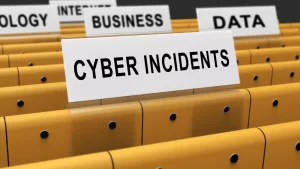 Robust incident response and forensics are crucial in the event of a security incident. IT auditors should understand both the cloud provider’s and the customer’s response processes and forensics techniques to ensure timely identification, containment, and recovery from security threats.
Robust incident response and forensics are crucial in the event of a security incident. IT auditors should understand both the cloud provider’s and the customer’s response processes and forensics techniques to ensure timely identification, containment, and recovery from security threats.
IT auditors must prioritize proactive measures alongside incident response. This includes regular vulnerability scanning and patching, utilizing threat intelligence for insights into emerging risks, conducting security awareness training for employees, and implementing regular penetration tests to identify and address vulnerabilities in the cloud environment.
7. Continuous Vigilance (Monitoring and Threat Intelligence)
 The cloud demands constant vigilance. IT auditors should understand monitoring tools and leverage threat intelligence sources to stay ahead of emerging threats. Evaluating the effectiveness of monitoring controls, intrusion detection systems (IDS), and security information and event management (SIEM) solutions is crucial.
The cloud demands constant vigilance. IT auditors should understand monitoring tools and leverage threat intelligence sources to stay ahead of emerging threats. Evaluating the effectiveness of monitoring controls, intrusion detection systems (IDS), and security information and event management (SIEM) solutions is crucial.
Security Posture Management (SPM) solutions offer a holistic view of security posture, assessing vulnerabilities for proactive remediation. Cloud Workload Protection Platforms (CWPP) provide advanced threat detection and response in cloud environments, using machine learning to identify and address suspicious behavior automatically.
8. Cloud-Specific Threats (Understanding the Landscape)
 Cloud environments have unique security threats distinct from traditional IT infrastructures. Data breaches, insider threats, account hijacking, insecure interfaces and APIs, data loss, and denial-of-service (DoS) attacks are some key concerns. IT auditors must be familiar with these threats and assess mitigation controls.
Cloud environments have unique security threats distinct from traditional IT infrastructures. Data breaches, insider threats, account hijacking, insecure interfaces and APIs, data loss, and denial-of-service (DoS) attacks are some key concerns. IT auditors must be familiar with these threats and assess mitigation controls.
IT auditors must prioritize key cloud threats: data breaches (assessing encryption and access controls), insider threats (evaluating identity management and access controls), account hijacking (implementing multi-factor authentication), insecure APIs (ensuring robust authentication), data loss (evaluating backup solutions), and Denial-of-Service attacks (assessing DDoS mitigation capabilities and recommending.)
9. Cloud Vendor Management (Choosing the Right Partner)
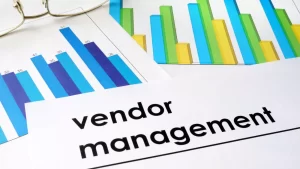 Many organizations rely on multiple cloud providers, highlighting the importance of cloud vendor management. IT auditors should evaluate the security posture of each provider, assess their compliance with industry standards, review contractual agreements, and monitor performance against service-level agreements (SLAs).
Many organizations rely on multiple cloud providers, highlighting the importance of cloud vendor management. IT auditors should evaluate the security posture of each provider, assess their compliance with industry standards, review contractual agreements, and monitor performance against service-level agreements (SLAs).
Before selecting a cloud provider, IT auditors should evaluate security controls, compliance, service offerings, and financial stability. Assess the provider’s commitment to security, adherence to relevant standards, and ensure their service portfolio aligns with organizational needs, considering pricing and scalability. Verify the provider’s financial stability for long-term service continuity.
10. Secure Configuration Management (Building a Strong Foundation)
 IT auditors should examine how cloud resources are configured. This includes reviewing virtual machines, storage buckets, databases, and network settings, ensuring adherence to secure configuration guidelines and best practices.
IT auditors should examine how cloud resources are configured. This includes reviewing virtual machines, storage buckets, databases, and network settings, ensuring adherence to secure configuration guidelines and best practices.
IT auditors should ensure that cloud resources are configured in accordance with established security guidelines and best practices, such as those published by the Center for Internet Security (CIS) or the National Institute of Standards and Technology (NIST). These guidelines provide valuable benchmarks for secure configuration and help organizations minimize their exposure to vulnerabilities.
11. Data Backup and Disaster Recovery (Preparing for the Worst)
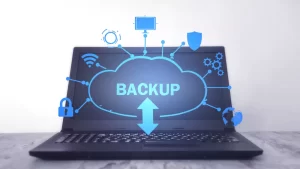 Cloud providers offer data backup and disaster recovery capabilities. IT auditors should evaluate their effectiveness in ensuring data availability and integrity. Reviewing procedures, backup frequency, retention policies, and testing restoration processes is crucial.
Cloud providers offer data backup and disaster recovery capabilities. IT auditors should evaluate their effectiveness in ensuring data availability and integrity. Reviewing procedures, backup frequency, retention policies, and testing restoration processes is crucial.
When assessing backup procedures, IT auditors should understand the cloud provider’s specific processes, including the types and frequency of backups (full, incremental, differential). Ensure the backup frequency aligns with the organization’s recovery time objectives (RTOs) and recovery point objectives (RPOs). Additionally, verify that regular checks are performed to confirm the integrity and accessibility of backups.
12. Testing the Response (Cloud Incident Response Testing)
 IT auditors should assess the effectiveness of incident response testing in the cloud environment. Reviewing the incident response plan, roles, responsibilities, communication channels, and escalation procedures is essential. Cloud-specific scenarios and tabletop exercises should be conducted regularly to test and refine response capabilities.
IT auditors should assess the effectiveness of incident response testing in the cloud environment. Reviewing the incident response plan, roles, responsibilities, communication channels, and escalation procedures is essential. Cloud-specific scenarios and tabletop exercises should be conducted regularly to test and refine response capabilities.
Enhance response capabilities by conducting cloud-specific scenarios (e.g., account hijacking), tabletop exercises, testing communication channels, and evaluating response timeliness. Use performance metrics like mean time to detect (MTTD) and mean time to respond (MTTR) to measure incident response effectiveness.
13. Industry-Specific Compliance Requirements
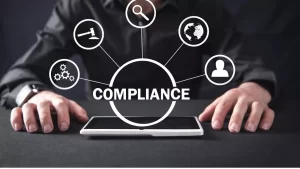 Certain industries have specific compliance requirements for cloud usage. IT auditors should familiarize themselves with regulations like HIPAA, PCI DSS, and FedRAMP and assess the cloud provider’s compliance with these requirements.
Certain industries have specific compliance requirements for cloud usage. IT auditors should familiarize themselves with regulations like HIPAA, PCI DSS, and FedRAMP and assess the cloud provider’s compliance with these requirements.
IT auditors ensure HIPAA compliance in the cloud by reviewing Business Associate Agreements, assessing data security controls, and verifying data access and encryption. For PCI DSS compliance, they confirm via Attestations of Compliance, assess the cardholder data environment, and verify encryption/tokenization. For FedRAMP compliance, auditors verify authorization, review security assessment reports, and ensure alignment of controls with agency requirements.
14. Vulnerability Management (Keeping Systems Patch and Secure)
 Cloud environments are susceptible to software vulnerabilities. IT auditors should evaluate the cloud provider’s vulnerability management program, including patch management processes, vulnerability scanning, and remediation timelines. Assessing patch communication and application by customers is crucial.
Cloud environments are susceptible to software vulnerabilities. IT auditors should evaluate the cloud provider’s vulnerability management program, including patch management processes, vulnerability scanning, and remediation timelines. Assessing patch communication and application by customers is crucial.
Assessing a Vulnerability Management Program involves scrutinizing the provider’s patch management, examining the frequency and depth of vulnerability scans, and evaluating established timelines for remediating identified vulnerabilities. The emphasis is on ensuring swift action, particularly for critical risks.
15. Third-Party Risk Management (Mitigating Shared Risk)
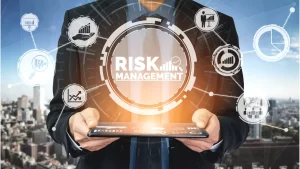 Organizations often rely on third-party vendors within the cloud environment. IT auditors should evaluate the organization’s third-party risk management practices, including vendor due diligence, security assessments, and contract reviews. Assessing whether the organization has established processes to monitor and manage the security risks associated with third-party cloud providers is crucial.
Organizations often rely on third-party vendors within the cloud environment. IT auditors should evaluate the organization’s third-party risk management practices, including vendor due diligence, security assessments, and contract reviews. Assessing whether the organization has established processes to monitor and manage the security risks associated with third-party cloud providers is crucial.
IT auditors recommend adopting emerging technologies for efficient Third-Party Risk Management (TPRM), including continuous monitoring, cybersecurity ratings services, and blockchain solutions for enhanced trust and transparency.
Empower Your Cloud Security with CloudFence.ai
Confidently navigate the ever-evolving cloud security landscape with the power of CloudFence.ai. Our comprehensive platform provides with the essential tools and insights to:
-
Gain complete visibility and control over your cloud environment:
- Monitor and audit cloud activity in real-time.
- Detect and prevent security threats before they impact your business.
- Ensure compliance with industry standards and regulations.
-
Simplify complex cloud security tasks:
- Automate routine tasks such as patch management and vulnerability scanning.
- Streamline incident response and forensics investigations.
- Reduce the risk of human error.
-
Make data-driven decisions:
- Gain insights into your cloud security posture with comprehensive reporting and analytics.
- Identify areas for improvement and prioritize remediation efforts.
- Optimize your cloud security resources.
Ready to empower your cloud security posture?
Explore our comprehensive cloud services and discover how we can help you achieve unparalleled security and peace of mind. Visit the link below—
https://www.cloudfence.ai/managed-noc
Conclusion:
As cloud adoption continues to accelerate, IT auditors must acquire and maintain a deep understanding of cloud security concepts and best practices. This guide has provided a foundation of essential knowledge to empower you to assess the security of cloud environments effectively. By mastering cloud computing fundamentals, the shared responsibility model, data protection, IAM, compliance, incident response, and monitoring, IT auditors can better evaluate the effectiveness of security controls and mitigate risks in the cloud.

